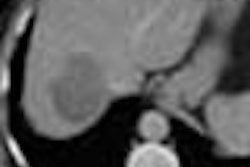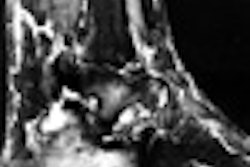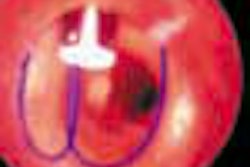SAN ANTONIO - MR angiography of the renal vasculature may have enough diagnostic power to alter the treatment plans of referring physicians in a majority of cases, if a study presented at the 26th annual scientific meeting of the Society of Cardiovascular and Interventional Radiology (SCVIR) is any indication.
In a prospective study, Dr. Reed Omary and colleagues at the Northwestern University School of Medicine in Chicago and the University of Wisconsin-Madison analyzed 30 sets of questionnaires, which were completed by doctors prior to receiving the MRA data and after reviewing the studies.
The goal of the study, Omary said during his oral presentation, was to determine if MRA -- known to show accurate, diagnostic quality images -- was sufficient enough to actually sway a doctor's thinking. In 67% of the cases, the physicians participating in the experiment changed their treatment plans based on the diagnostic images obtained from the MRA, he said.
"Seven arteriograms and one renal biopsy were avoided," said Omary, an assistant professor of radiology at Northwestern.
Before the imaging studies were performed, Omary said that 55% of the clinicians expressed confidence in their diagnoses; after taking the MRA images into account and re-evaluating the patients if necessary, 90% of the doctors expressed confidence in their diagnosis.
"The 35% increase in confidence was highly statistically significant," Omary said. The p-value of that significance was 0.0001, he reported.
The MRA examination consisted of time-resolved 3D gadolinium-enhanced fast spoiled gradient echo scans, 2D cine phase contrast measurements of renal blood flow, and delayed 3D gadolinium-enhanced renal volume measurements. Performing the MRA studies has advantages over other diagnostic methods in that the procedure is fast, noninvasive, and can depict the renal anatomy with precision, Omary said. It also gives the clinician the opportunity to stratify patients and doesn't involve the use of ionizing radiation, he said.
However, he admitted that the study was limited in its ability to be generalized, particularly because he did not compare his results with competing imaging modalities. In addition, the study did not scrutinize the economics of using his sophisticated MRA techniques, he said.
However, "MRA has considerable impact on referring physicians' diagnoses and treatment of patients with suspected renovascular disease," he said.
Dr. Timothy Murphy, an associate professor of diagnostic imaging at Brown University School of Medicine, said the results of the study were impressive in showing MRA's impact on treatment decisions. He said, however, that confirmatory studies will be required to convince doctors that the MRA procedures employed by Omary's team are cost-effective.
"If you look at the cost-effectiveness of using the device that may help sort out its usefulness," Murphy said.
By Edward Susman
AuntMinnie.com contributing writer
March 7, 2001
Click here to post your comments about this story. Please include the headline of the article in your message.
Copyright © 2001 AuntMinnie.com



















